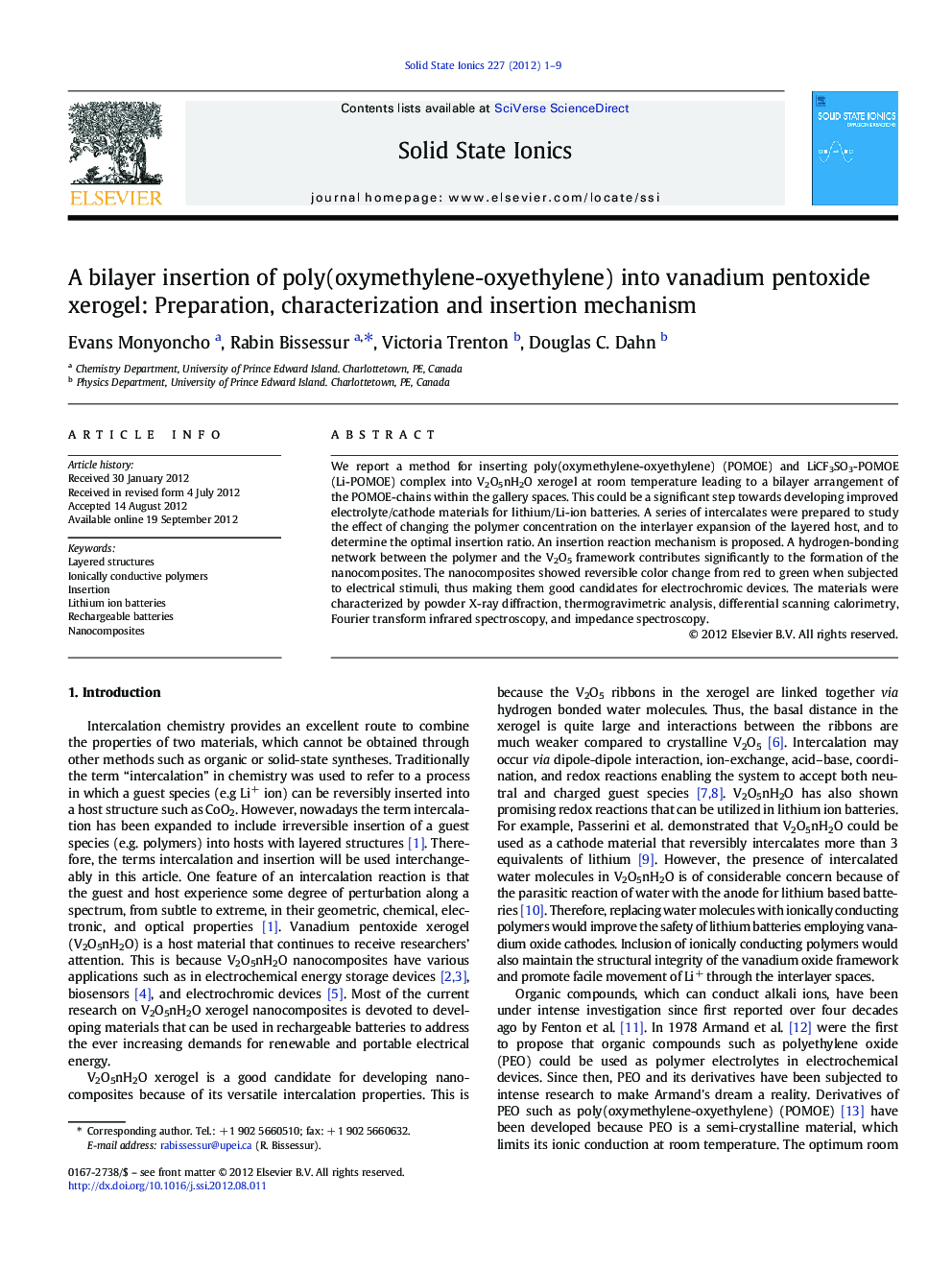| Article ID | Journal | Published Year | Pages | File Type |
|---|---|---|---|---|
| 1296123 | Solid State Ionics | 2012 | 9 Pages |
We report a method for inserting poly(oxymethylene-oxyethylene) (POMOE) and LiCF3SO3-POMOE (Li-POMOE) complex into V2O5nH2O xerogel at room temperature leading to a bilayer arrangement of the POMOE-chains within the gallery spaces. This could be a significant step towards developing improved electrolyte/cathode materials for lithium/Li-ion batteries. A series of intercalates were prepared to study the effect of changing the polymer concentration on the interlayer expansion of the layered host, and to determine the optimal insertion ratio. An insertion reaction mechanism is proposed. A hydrogen-bonding network between the polymer and the V2O5 framework contributes significantly to the formation of the nanocomposites. The nanocomposites showed reversible color change from red to green when subjected to electrical stimuli, thus making them good candidates for electrochromic devices. The materials were characterized by powder X-ray diffraction, thermogravimetric analysis, differential scanning calorimetry, Fourier transform infrared spectroscopy, and impedance spectroscopy.
► Bilayer insertion of poly(oxymethylene-oxyethylene) (POMOE) into V2O5nH2O. ► Hydrogen-bonding network between POMOE and V2O5 framework. ► Tg of intercalated POMOE decreases with increasing amount of the polymer. ► Observed electronic conductivity of POMOE-V2O5 nanocomposites.
